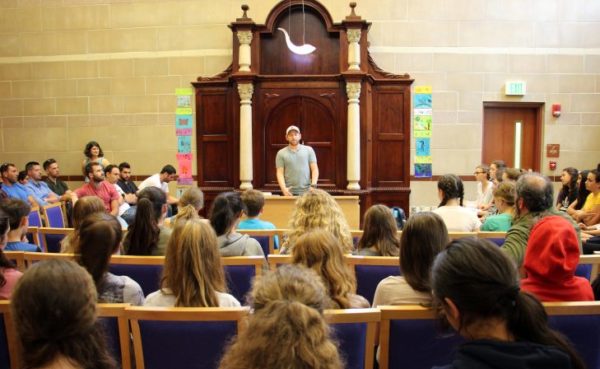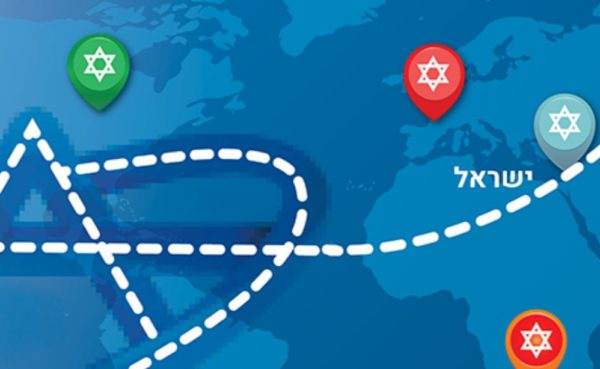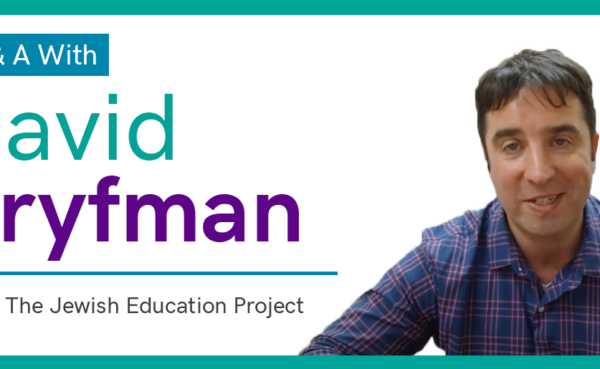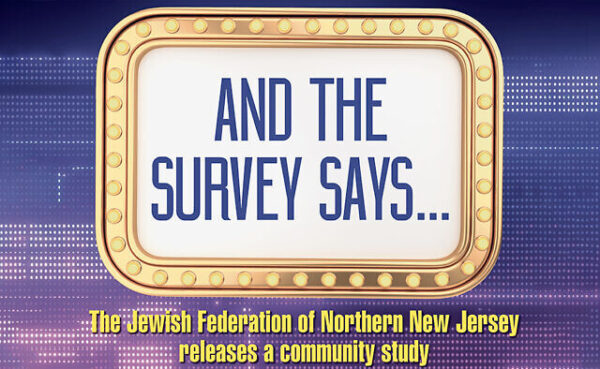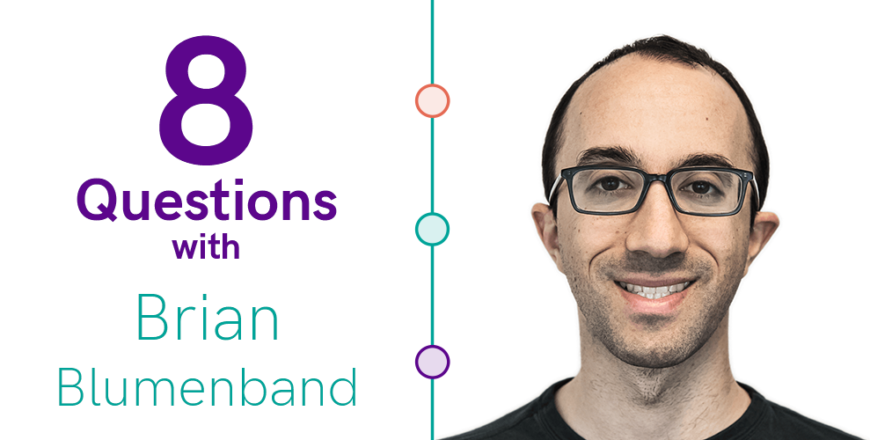
8 Questions with Brian Blumenband
In “8 Questions With…,” we share a brief Q&A with a staff member. In this edition, we hear from Brian Blumenband, who joined Rosov Consulting in 2014 and is now Associate Director, Systems & Innovation, bringing many years of experience connecting nonprofits, small startups, and media organizations with technology and design.
1. What’s your area(s) of expertise and how has it been beneficial and led to success in your work?
Much like Steve Jobs explained Apple’s success as the intersection of liberal arts and technology, I would explain my expertise as being at the intersection of design and technology. From an early age, I have been experimenting with these two areas and using an array of ever-evolving tools to combine the two, resulting in creative ways to express and share new ideas. The other aspect of my life that is incredibly beneficial for my work at Rosov is my Jewish communal knowledge and experience. Growing up, I “did all of the programs” of the sort we study (day school, youth group, camp, Israel trip, gap year, etc.), I majored in Jewish studies in college, and I continue to be actively involved in my local Jewish communities.
2. What experiences have led you into your current career path?
The experience most directly responsible for my current career was being an editor on my college newspaper: it’s where I met Eitan Cooper (former Senior Project Associate), who told me about Rosov Consulting. Aside from this connection, though, working on school newspapers in middle school, high school, and college enabled me to develop essential design and leadership skills that continue to have a significant impact on my current work and career. I also spent a number of years prior to Rosov working with the PresenTense Group, helping to further its mission to foster social entrepreneurship and creativity in Jewish and Israeli communities. This experience opened my eyes to new and innovative ventures in the Jewish community and deepened my desire to work in the Jewish world.
3. What do you like learning about most through your work?
There’s so much! Since my work touches many areas, I get to learn about all of the new ideas and technologies that are being created every day. One area that I really enjoy exploring is new systems to help us do our work better. I get to play around with all these different tools and platforms, comparing and contrasting them with each other, and learning if they will be useful for our team.
I also like learning about the different clients we work with, which often include some of the newer and innovative startups and organizations in the Jewish world.
4. What do you like most about working at Rosov Consulting?
We have a really great team at Rosov Consulting—smart, thoughtful, and supportive. Rosov is also truly a learning organization—learning is supported at all levels and encouraged as a core company activity. Over the past year, I’ve been leading a number of knowledge management efforts to help our team improve our sharing of tacit and implicit knowledge about our work with each other. It’s been heartening to see the enthusiasm across the team for these efforts. Finally, I am so appreciative that Rosov is a place where you can grow and that supports employee’s interests in their own professional development.
5. What are some challenges of your work?
A challenge of dealing with the “new” is that things are always changing—from the technology we use, to the areas of focus our work addresses, to the outside world around us. It can be difficult to keep up! I’ve definitely felt this in the past year (along with everyone else working in these spaces) around information security and privacy, where new threats and issues constantly emerge and new laws and policies come into (or out of) effect.
6. What have been the biggest changes in the field and/or your work specifically since you started?
When I started, interviews were being conducted over Skype, Slack was not even a year old, and Windows 10 hadn’t been released. The internet is a different place than it was 8 years ago – the web is faster, easier to use, and more flexible for all kinds of devices. While we have always had a distributed team, the ways in which we work and communicate with each other have transformed. These changes have enabled IT and systems work to become more strategic, focusing on the benefits it can bring to the company (rather than being just reactive to issues).
I also have learned more about data visualization and new ways to incorporate innovative visualization tools and techniques into our work (including interactive visualizations, dashboards, and maps). The importance of data visualization across the business (and educational) world can be seen through the recent creation of the Data Visualization Society.
7. How do you think your job and/or the field might change in the next 10 years?
The way people create and consume information is bound to change significantly in the next 10 years. Design tools are becoming more collaborative, which allows teams to create together in virtual spaces. Artificial Intelligence (AI) and Machine Learning (ML), along with increased automation, aim to make all sorts of tasks easier – analyzing data, managing and securing systems, and countless unknown areas. Finally, digital will continue to develop as a primary mode of learning and reading, evolving a culture previously focused on print.
8. What do you think is essential reading to excel in your field?
Storytelling with Design by Cole Nussbaumer Knaflic has become my data visualization “bible.” In addition to elegantly explaining how to visualize data for business audiences, the book shows why it is important to do so. The Data Visualization Society’s publication Nightingale is also a great resource for a variety of articles about visual information design, written by new and established writers from around the world.
In terms of keeping up with all of the “new” of the web, Product Hunt is the place to go, where you can find makers pitching their new app, website, or product.
